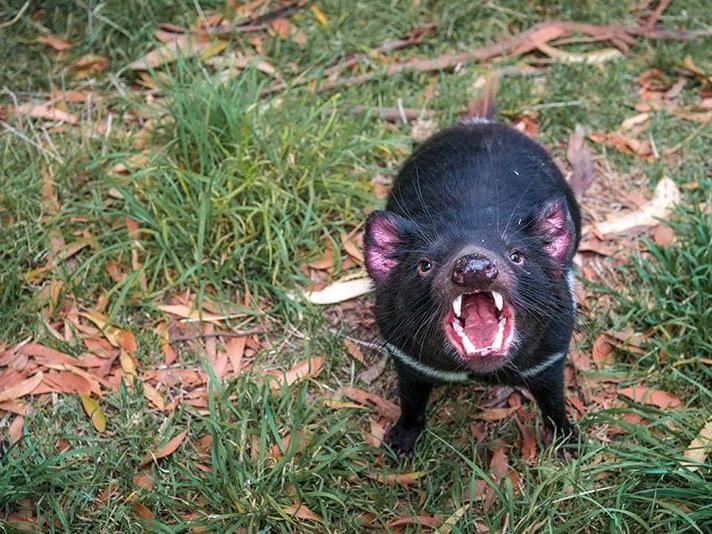Wildlife - Devils and Quolls
Tasmanian devils
One of Tasmania’s most intriguing native animals is the Tasmanian devil.
The world's largest surviving carnivorous marsupial, Tasmanian devils grow to around 30 cm high at the shoulder, with large males weighing as much as 12 kg. They have a distinctive black coat with variable white markings on the rump and throat.
Perhaps the devil’s most outstanding characteristic is its guttural call—a screeching, hissing sound that chilled the blood of early European settlers and inspired the name ‘devil’. In reality, Tasmanian devils are shy, elusive creatures that pose no risk to people.
Devils are highly adaptable, with habitat ranging from coastal heath to dry forests and alpine areas. They are nocturnal hunters that feed mainly on carrion, although they do occasionally take live prey. Their powerful jaws and teeth allow them to completely devour the bones, flesh, fur and feathers of wallabies, small mammals and birds.
Devil Facial Tumour Disease
Devil Facial Tumour Disease (DFTD) is a devastating, infectious cancer that has dramatically reduced devil populations across Tasmania. The disease was first recorded in 1996 and is known to kill up to 97% of devils in affected areas. The Save the Tasmanian Devil Program was established in 2003 in response to the alarming decline of devil numbers across the state. Tasmanian devils are now listed as an endangered species, and research continues to find a cure for this dreadful disease.
Tasmania’s west coast and the Tarkine are the only two remaining disease-free areas of natural devil habitat in the state.
Quolls
Tasmania is home to two species of quoll—the eastern quoll and spotted-tailed quoll.
The spotted-tailed quoll is the world’s second-largest carnivorous marsupial (after the Tasmanian devil), growing up to 130 cm long and weighing up to 4 kg. These nocturnal marsupials range from reddish brown to dark chocolate brown in colour, with white spots covering the body and tail. They are found in wet forests, cool temperate rainforest and coastal scrub and are most common along Tasmania’s north and west coastal regions.
Eastern quolls are smaller and more slightly built than spotted-tailed quolls. They can grow to 60cm in length and weight up to 1.5 kilos. Eastern quolls range in colour from ginger to fawn to dark brown or black, and also have small white spots on the body (but not the tail!).
You’ll have to be a bit of a night owl to see a quoll—they are accomplished nocturnal hunters that prey on anything from small marsupials, rats, reptiles, insects, birds and eggs. They are not above scavenging, and compete directly with Tasmanian devils for food.
Image credit: Wai Nang Poon
